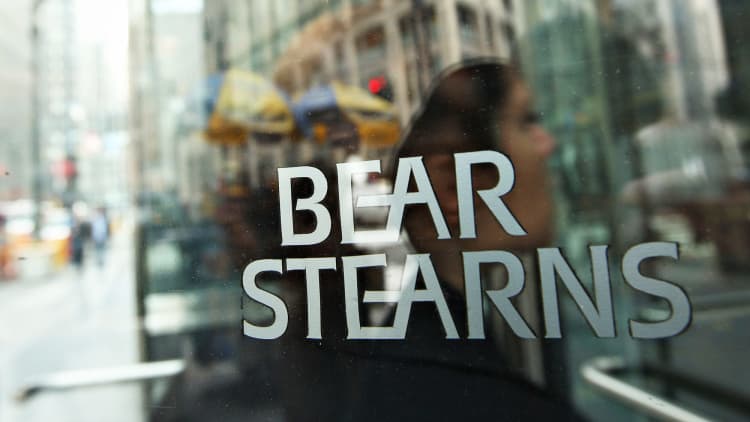
J. P. Morgan Chase rescued Bear Stearns from the grips of a widening financial crisis a decade ago on Friday but it isn't clear the deal brought many long-term benefits.
In fact, CEO Jamie Dimon has said he regrets the decision. "In case you were wondering," Dimon wrote in a letter to shareholders three years ago. "No we would not do something like Bear Stearns again — in fact I don't think our Board would let me take the call."
Wall Street was a very different world in March 2008, when Bear Stearns was the fifth-largest investment bank. It made billions of dollars a quarter trading bonds and financing and executing trades for hedge funds. It also held tens of billions of dollars worth of mortgage securities on its books, which proved to be its downfall.
At the request of the government, J. P. Morgan originally agreed to rescue Bear for $2 a share, a stunning fire sale price that was eventually raised to $10. (Bear's stock had closed on March 14, 2008, at $30 a share. At its height, it had traded more than five times that amount).
J. P. Morgan projected $1 billion in potential revenue gains by combining Bear's businesses into itself, including a big boost from prime brokerage, the hedge fund trading and financing business that Bear once dominated. A year after the deal, J. P. Morgan was aggressively expanding the prime services business, taking it to Europe and Asia, according to Dimon's 2009 shareholder letter.
But from the beginning there were also costs. The bank estimated at first it would take $6 billion to cover severance, litigation, asset write-downs and other expenses. Bear had 14,000 employees at the time and a relatively new $1 billion, 1.2 million square foot headquarters building, located directly across the street from J. P. Morgan's Park Avenue offices.
The Federal Reserve agreed to finance $30 billion of Bear Stearns' mortgage securities holdings to get the deal done.
In his letter to shareholders in 2008, Dimon defended the purchase. "Under normal conditions, the price we ultimately paid for Bear Stearns would have been considered low by most standards. But these were not normal conditions, and because of the risk we were taking, we needed a huge margin for error. We were not buying a house — we were buying a house on fire."
Then the crisis deepened, and the lawsuits and regulatory fines piled up.
J. P. Morgan would go onto buy the troubled thrift Washington Mutual, adding still more toxic mortgages to its inventory, and it would be held legally accountable for the business it inherited, to the tune of at least $19 billion in fines and settlements, including a $13 billion mortgage settlement with multiple regulators in 2013.
Dimon told shareholders in 2015 that about 70 percent of the legal expenses were tied to Bear Stearns and Washington Mutual.
"In the Bear Stearns case, we did not anticipate that we would have to pay the penalties we ultimately were required to pay," he said.

